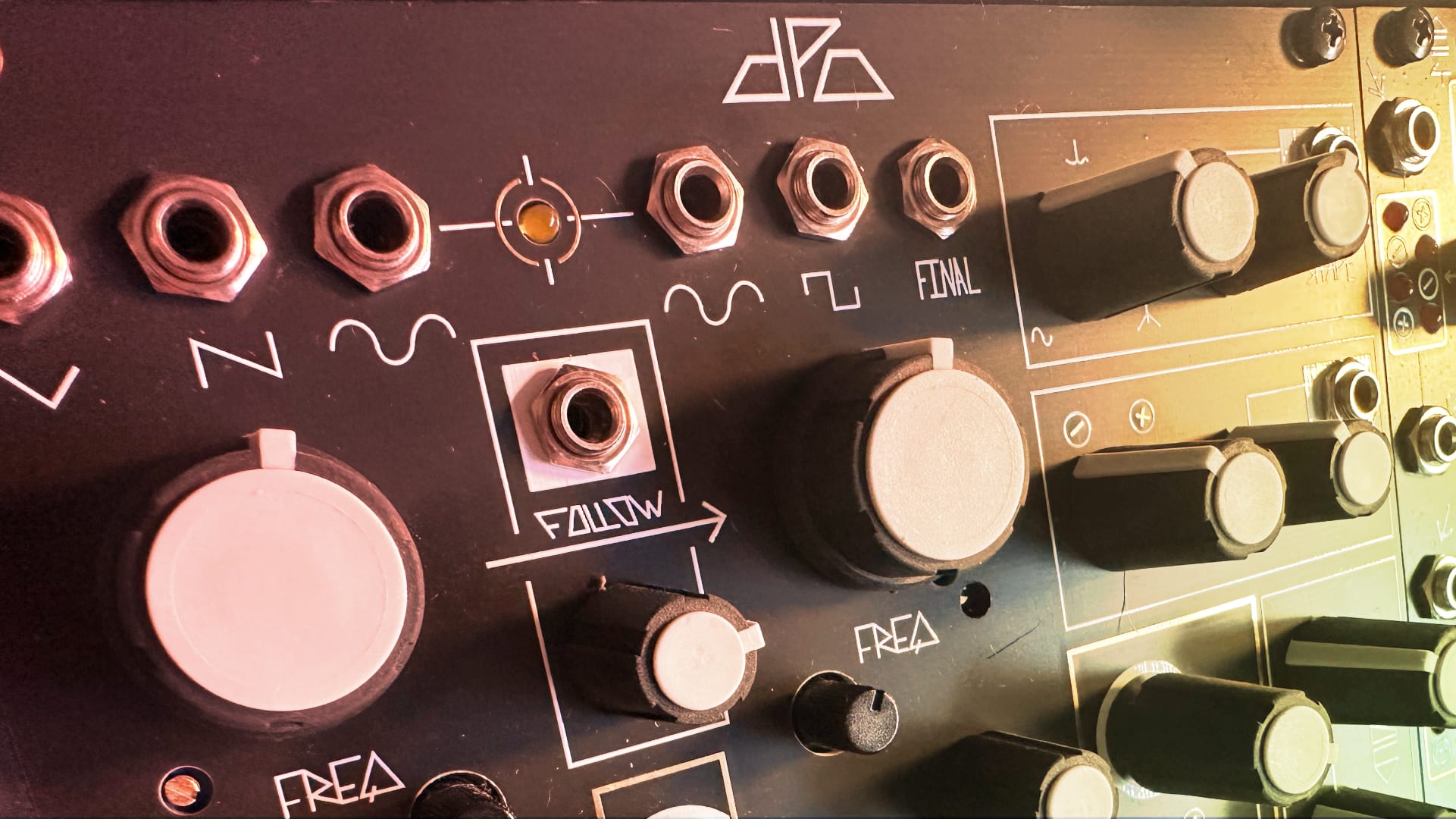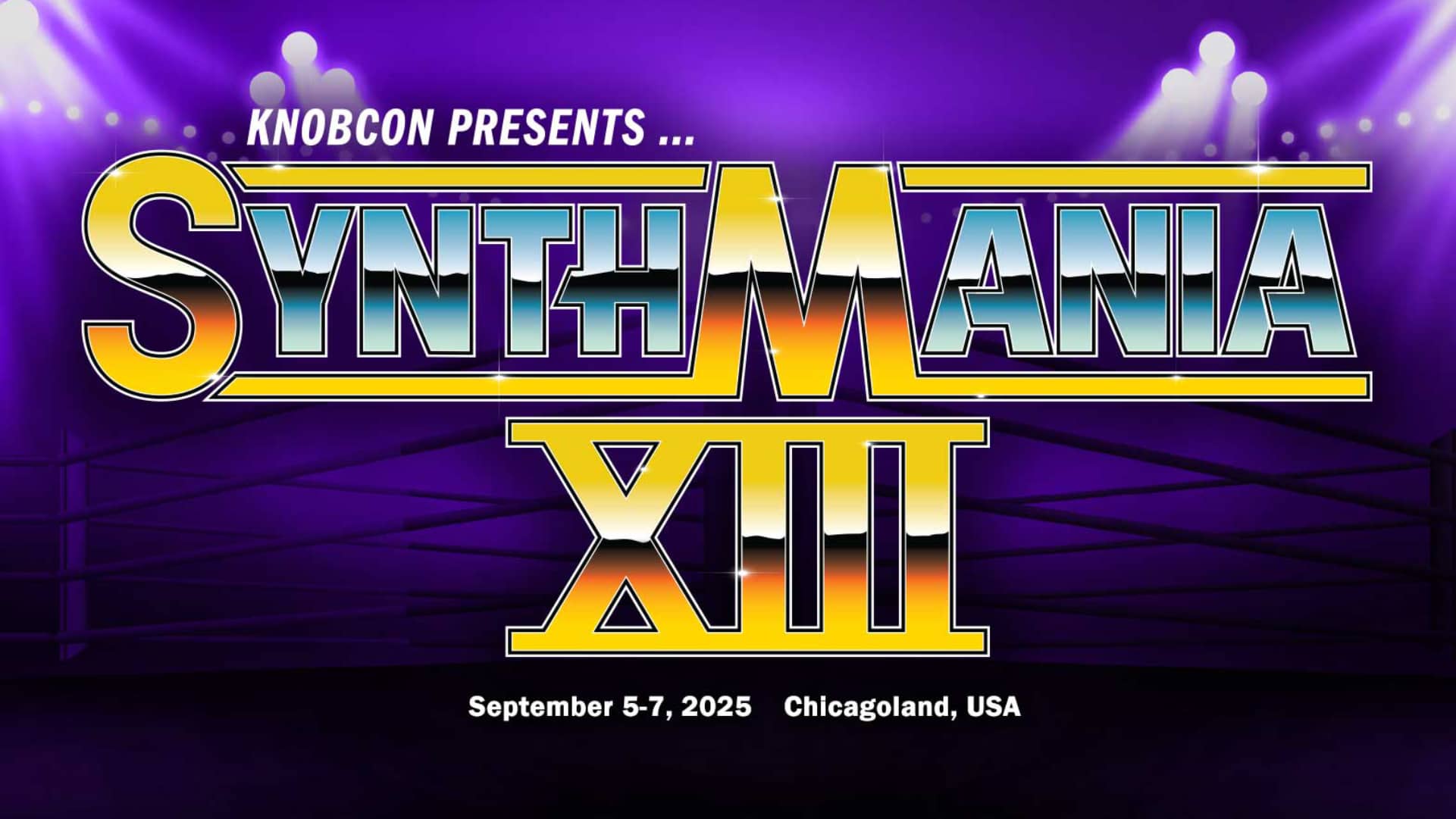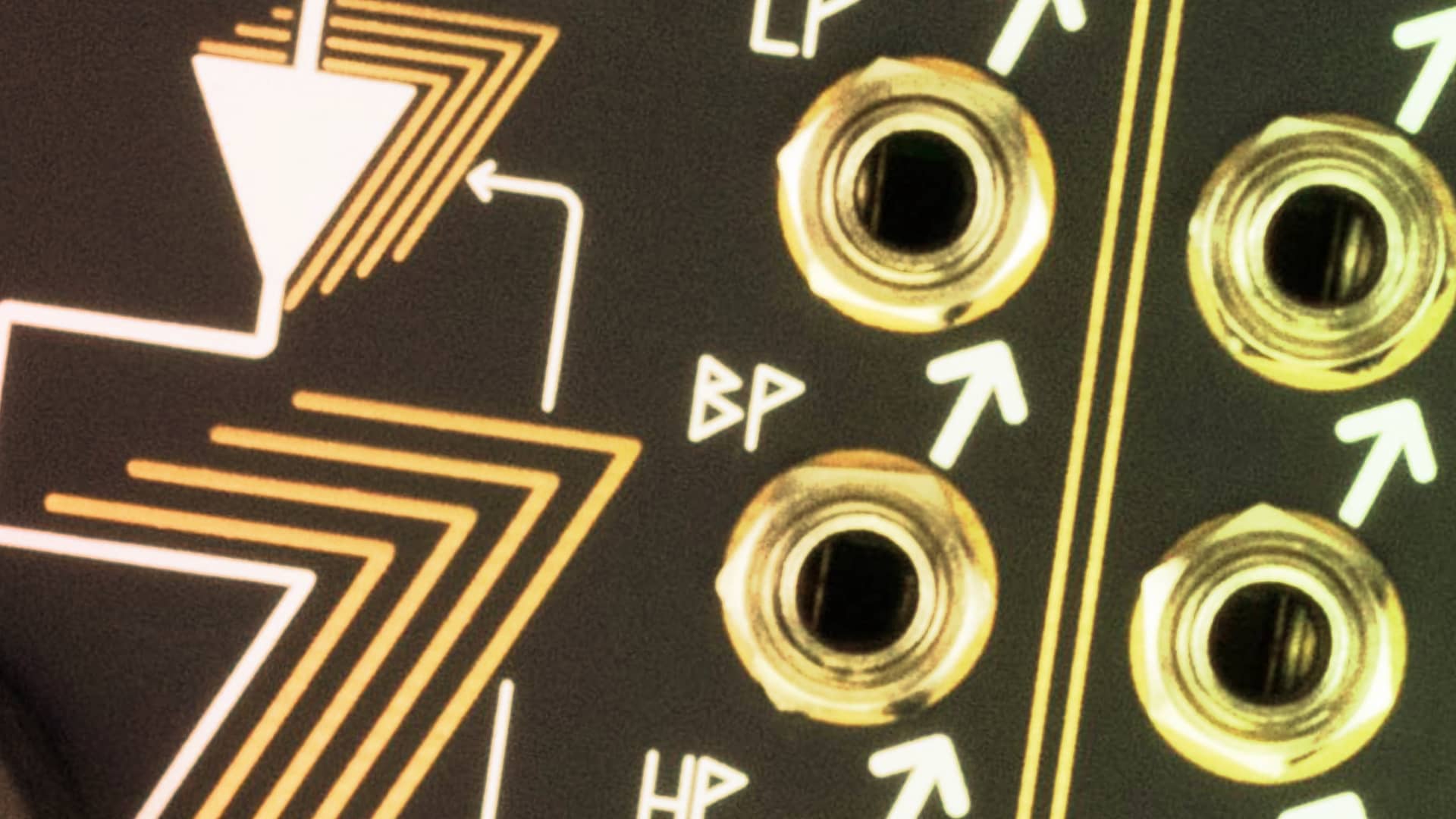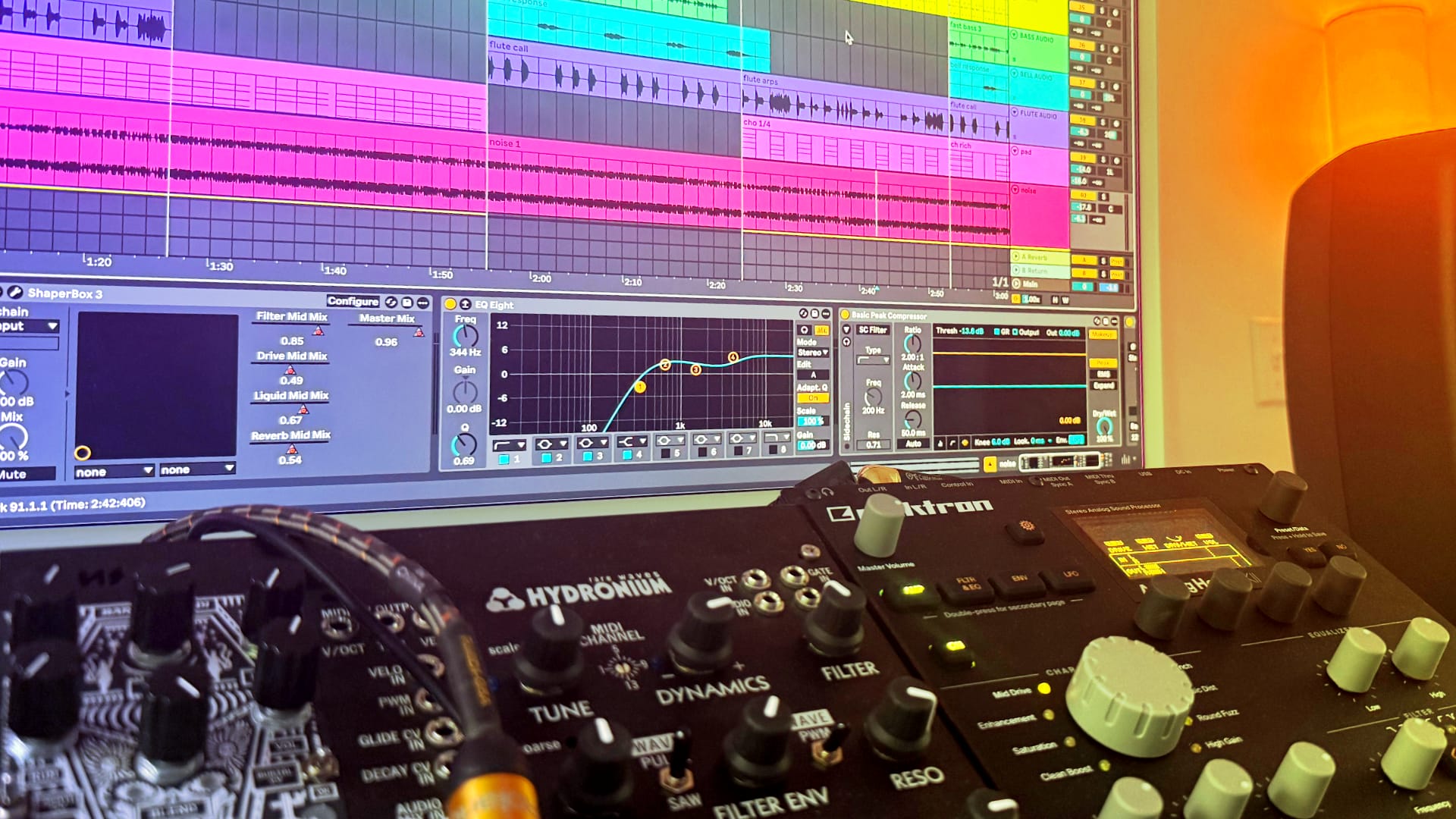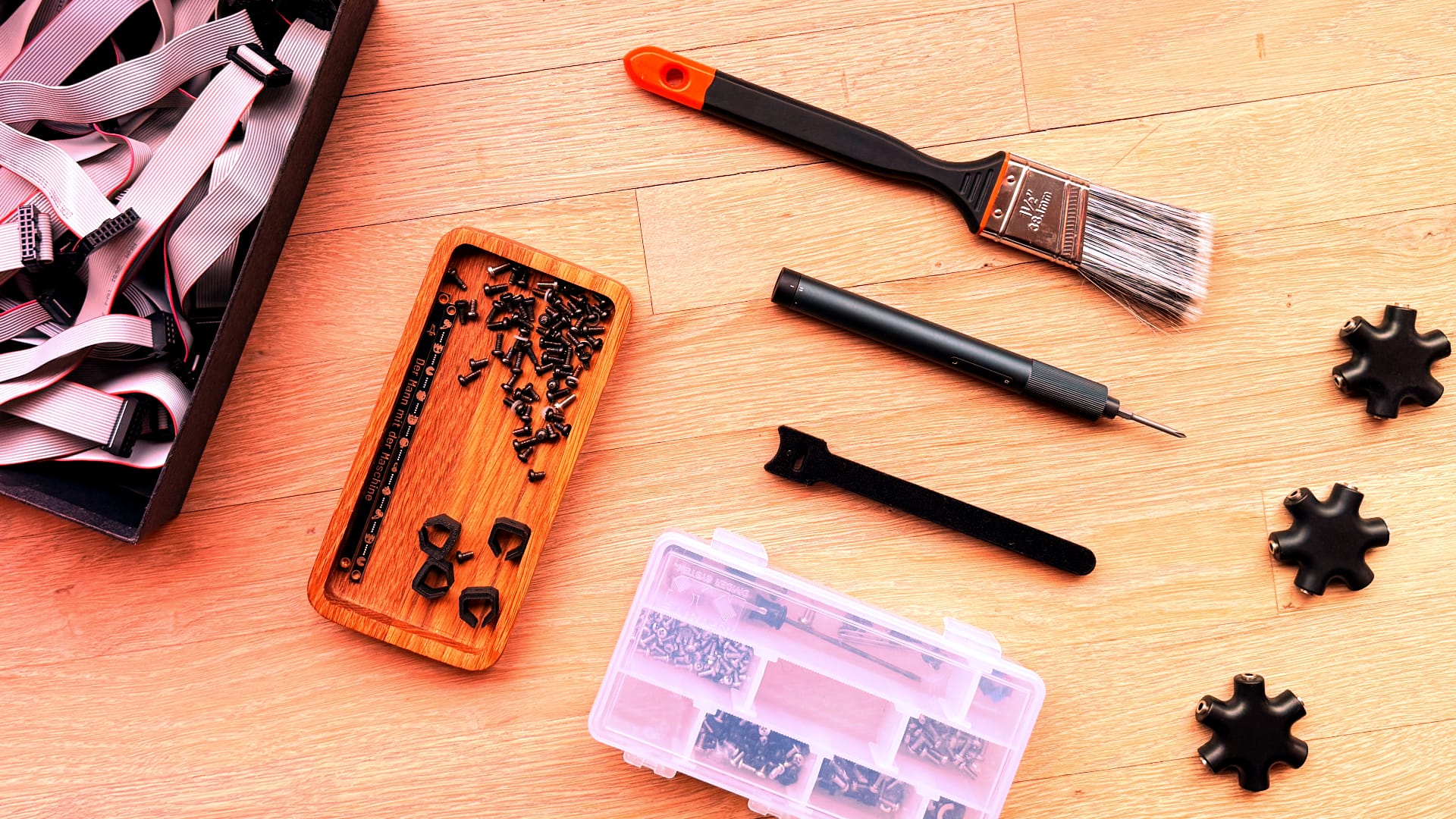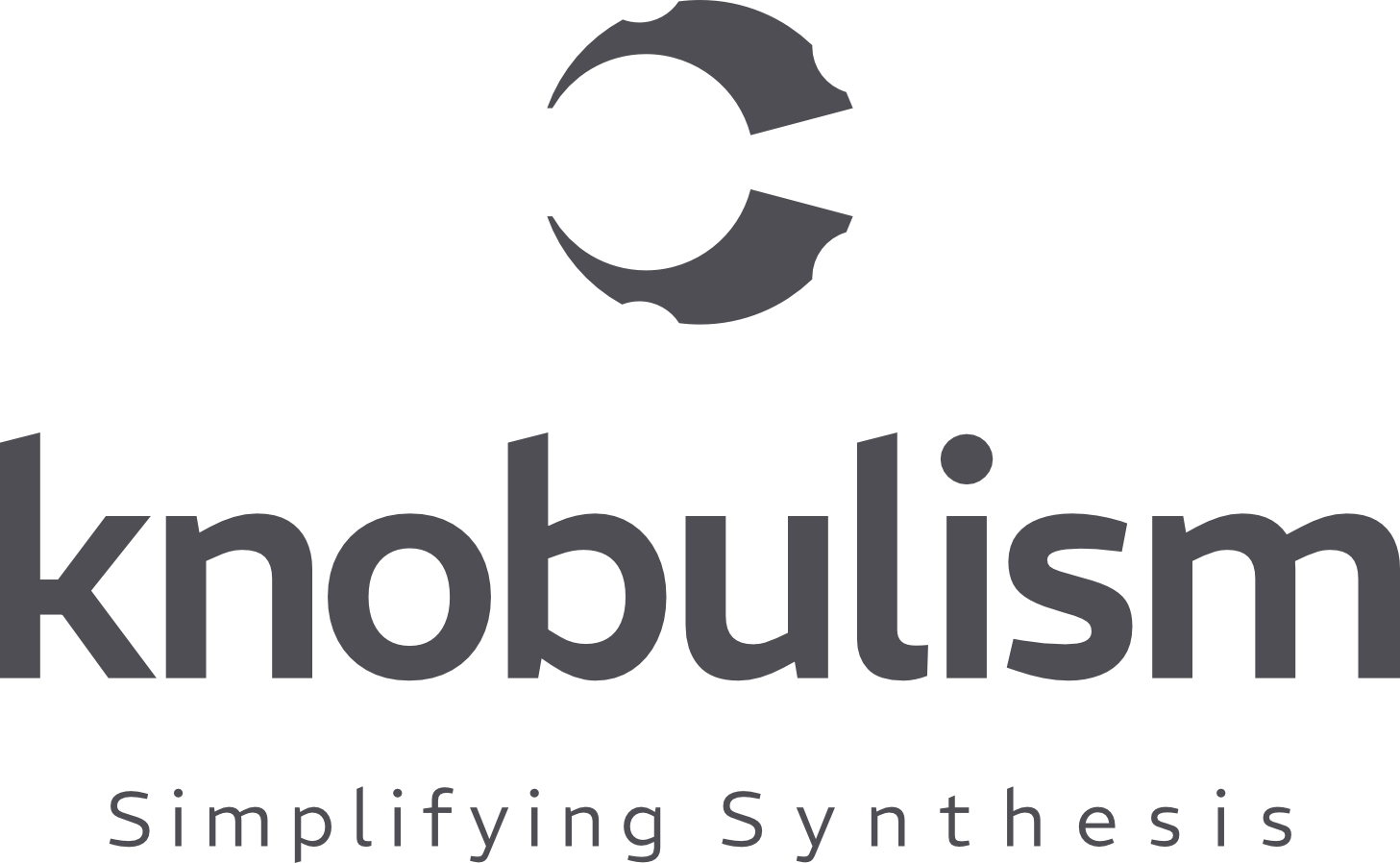Yo, synth nerds. Today, we’re getting deep on patch programming – a skill that can change the way you think about sound design and modular synthesis. Before we start connecting cables, let’s discuss why this skill is so valuable and how it differs from using all-in-one modules.
You’ve likely purchased a few of those comprehensive, feature-packed modules promising a wide range of complex sounds or functions in a single unit. You know, like kick drums, drone machines, generative sequencers, multi-synth engine oscillators, or the many other cool devices that combine several features into one easy-to-use module. They are undoubtedly super cool and have their place in many setups. However, many of them are a modular synth patch behind the panel. So, when I have GAS for some new awesome-looking module, I take a look at my existing setup and try to patch a version of the all-in-one. I’m not trying to replace the module; I’m more interested in the underlying mechanics of how it was done. By doing this, I increase my patching knowledge and can integrate bits of what I learn with other patches. There’s something special about creating sounds from scratch using basic modules and thoughtful patching.
If you’ve been around for a bit in the modular synth community, you’ve likely seen some politics and snarky comments about the merits of all-in-one modules versus patch programming with simpler components. Maybe you’ve even felt attacked by others claiming their way is the only way. If you’ve experienced something like that, firstly, I am sorry you had to deal with that nonsense; secondly, anyone verbally assaulting someone else for their personal choices has bigger problems than the victim. If you need to talk to someone, reach out to me or another friend for help. There really is no argument to be had on this topic. If you are not into all-in-one modules, cool, do not buy them. The same goes for the other way; if you are not into learning patch programming and would rather spend your time on higher-level music making, great, you should do that. This article is not about pitting all-in-one modules vs. patch programming. It is about the joy and sense of accomplishment I think you will feel from learning how to patch something complex from something simple.
Why Learn Patch Programming?
- Unlimited Possibilities: When you master patching, you’re not constrained by preset algorithms. Your own creativity becomes the primary limit.
- Deeper Understanding: Building sounds from the ground up helps you truly grasp how they’re created and shaped. It’s akin to understanding the chemistry of cooking rather than just following recipes.
- Unique Sounds: While presets are convenient, the sounds you create through careful patching are uniquely yours. There’s a real sense of accomplishment in that.
- Problem-Solving Skills: Patch programming develops analytical thinking and creative problem-solving. You’ll learn to dissect complex sounds, understand signal flow, and creatively use modulation. These skills enhance your overall approach to sound design and music production.
- Cost-Effective: Buying a drum module might be cheaper than the modules needed to patch one yourself. However, learning to maximize your existing modules can be more economical than constantly buying new, specialized units.
- It’s Fulfilling: There’s a deep satisfaction in experimenting and discovering new sounds. Whether you’re a hobbyist, professional musician, or sound designer, the process of patch programming keeps your work and passion fresh and inspiring.
The Building Blocks
Before we explore some patch examples, let’s quickly review the basic building blocks we’ll be working with. In last week’s article, Modular Synth Signal Flow: It’s All Just Voltage, people!, I lay out a general basic module hierarchy. These are the fundamental components of most modular systems. While they might seem basic individually, combining them creatively allows you to create a vast array of sounds, from lush pads to gnarly bass, ethereal soundscapes to punchy drums.
Now, let’s explore some patch examples. I will list some common or popular all-in-one modules and then try to recreate the functionality with basic modules. Keep in mind that I do not have a schematic or block diagram in front of me to help sort out how these modules work. I am guessing and trying to approximate their functionality. I’m hoping to illustrate how interesting this process can be while sharing why someone might want to patch from scratch or use cases for getting the all-in-one.
The Patches
Befaco Morphader or cross fader
Making a cross-fader is easy, right? A couple of VCAs with an offset generator and an inverter and you’re done. Well, it’s actually a bit more complicated. That easy version does not exactly crossfade, it more turns on source down and then the other source up. At no point are the wave forms ever mixed at an equal level. It’s more like a slowly fading solo button. Below I show the complexity behind a crossfader that mixes waveforms so you can morph from a sine wave to a saw.
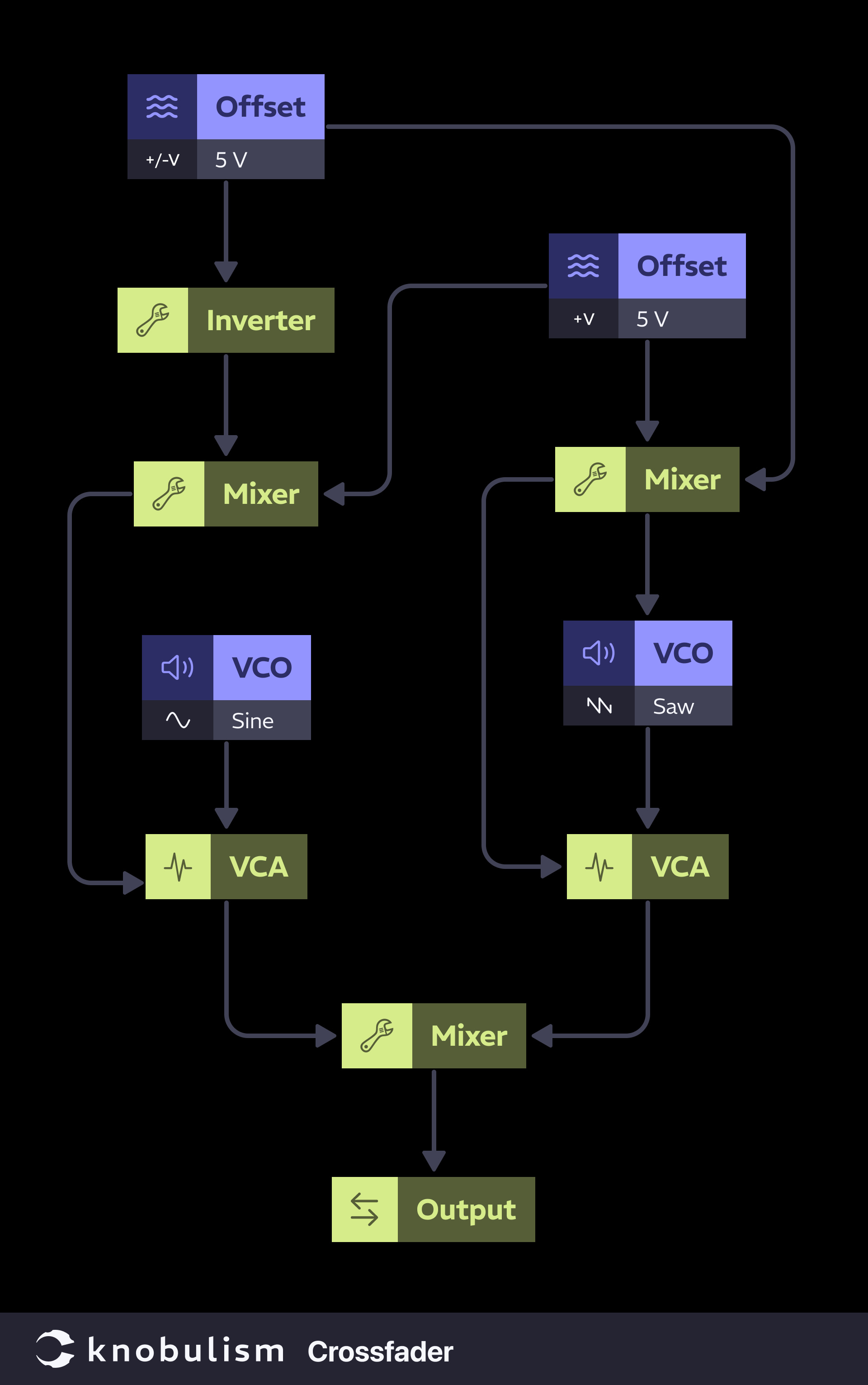
The Morphader is essentially 4 of these crossfader patches, plus CV control over the fade for each channel. It’s pretty clear that patching this module won’t save you money or space. But if you do not have a crossfader and have some simple modules laying around, you can build one.
SSF Ultra-Random Redux or timed random bursts
The Ultra-Random Redux is a complex random voltage generator with extensive modulation and probability features. Trying the patch the whole thing could turn into an article on its own. Instead, Let’s focus on one section and create timed bursts of random pulses. We will create three controls, one will control the rate of the bursts, the switch gate source toggles between rates. A second to control when the bursts happen, the sequencer gate allows the random bursts to pass. Finally a third to control the density of the gates in the burst, the comparator threshold parameter will decrease density the higher you set it..
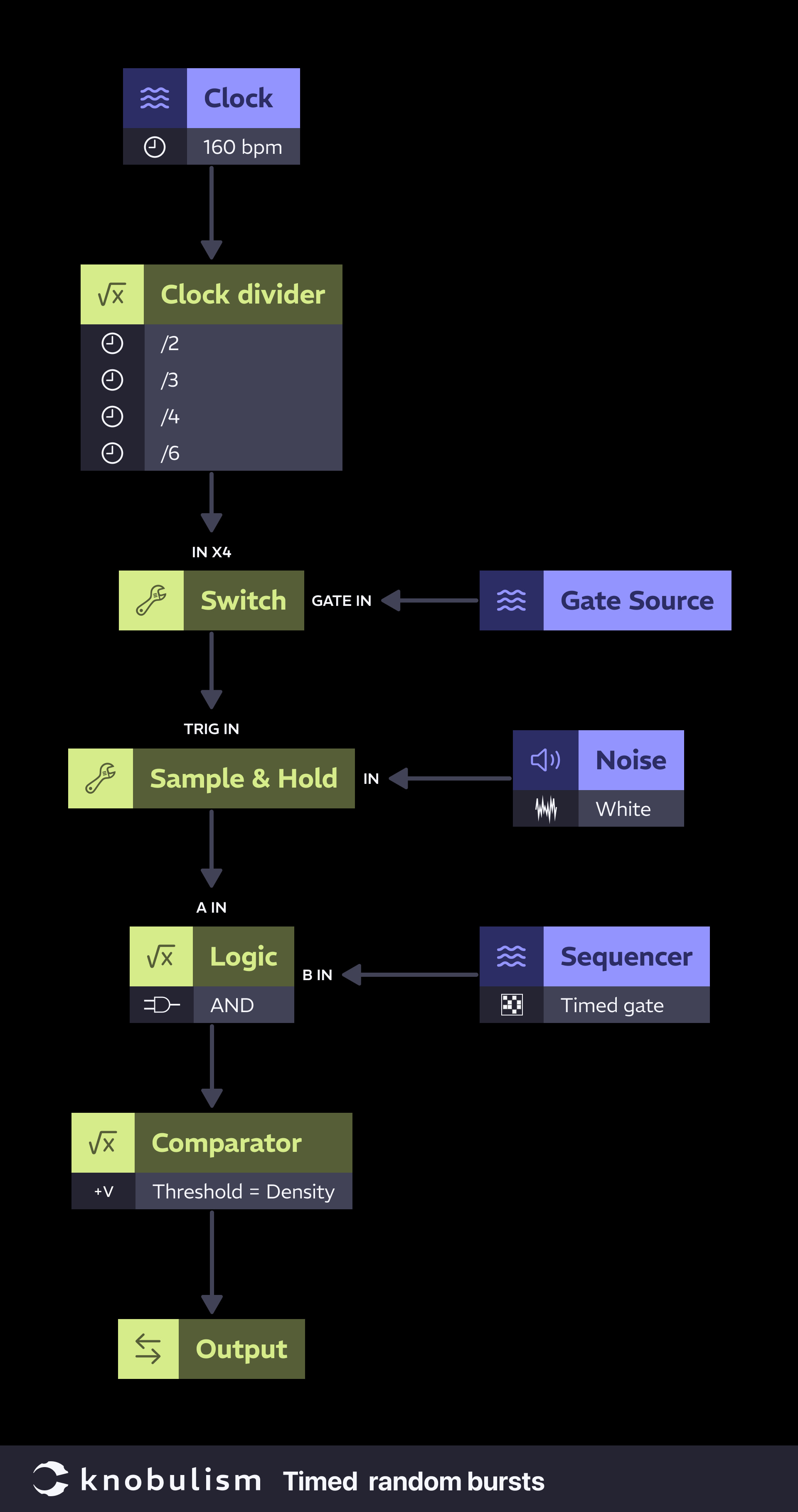
This patch gives you a taste of timed random bursts, but it’s just scratching the surface. The URR has so much going on under the panel it would be impractical to replicate using basic component modules. This patch, which is only a tiny part of URR, uses no less than 8 modules. It is nice to understand how it works so you can integrate these concepts or portions of them into other patches, but getting all the functionality of URR in 10hp is mind blowing.
Zadar or complex envelope shapes
The Zadar is known for its complex, multi-stage envelopes. This patch is a simpler approximation and can create more expressive envelope shapes than a standard envelope. It’s useful for understanding how complex envelopes are built.
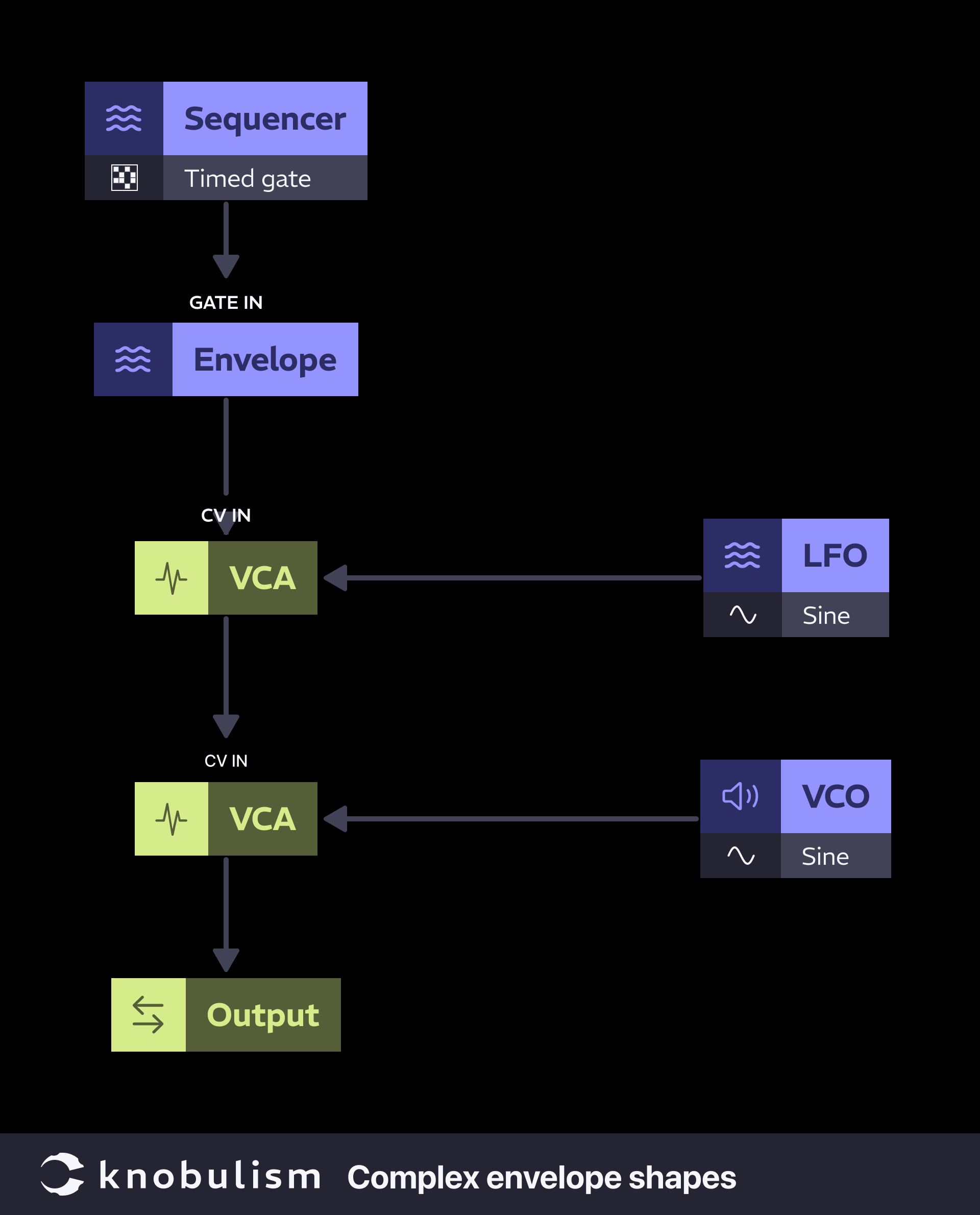
- Use multiple envelope generators in series
- Route the end-of-cycle output of one envelope to trigger the next
- Use VCAs to control the level of each envelope stage
- Mix the outputs of all envelope VCAs
- Use an LFO or function generator to modulate the envelope times or levels for more variation
The Zadar has the ability to bend, twist, reverse, squish and stretch your envelopes. In this pretty complicated patch we barely scratched the surface of what it can do, and only for one envelope compared to Zadar’s four. It’s pretty obvious why you might want this in a performance system. That said, knowing you can mix any CV with your envelopes to get new and interesting modulation in other parts of a patch is pretty exciting.
Make Noise DPO or complex VCO
The DPO is a dual oscillator with complex FM capabilities. This patch gives you simpler version of the DPO but it is a great way to understand the basics of what is happening under the panel of complex oscillators.
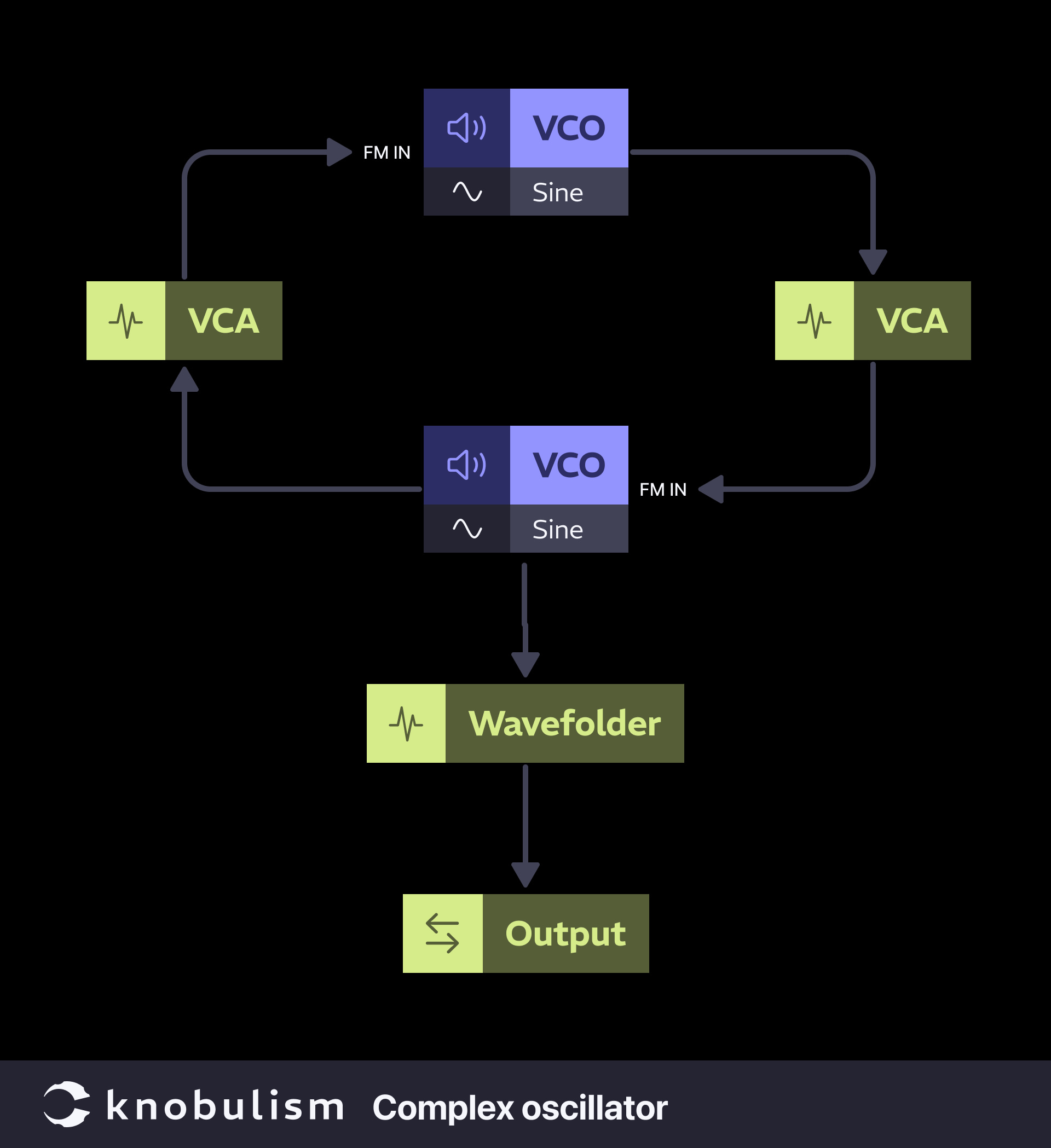
This patch opens the door to FM synthesis, but the DPO is more than just an FM powerhouse. Its carefully tuned tracking and normalled connections make it a self-contained ecosystem of sound design. Our patch is like a chemistry set; the DPO is a full-fledged laboratory.
Future Sound Systems Recombination Engine or wave-splicing oscillator
The Recombination Engine creates complex waveforms by splicing different waves from 3 oscillators. This patch focuses on two oscillators to keep things more simple. It allows for some basic wave splicing and illustrates the concept of wave splicing.
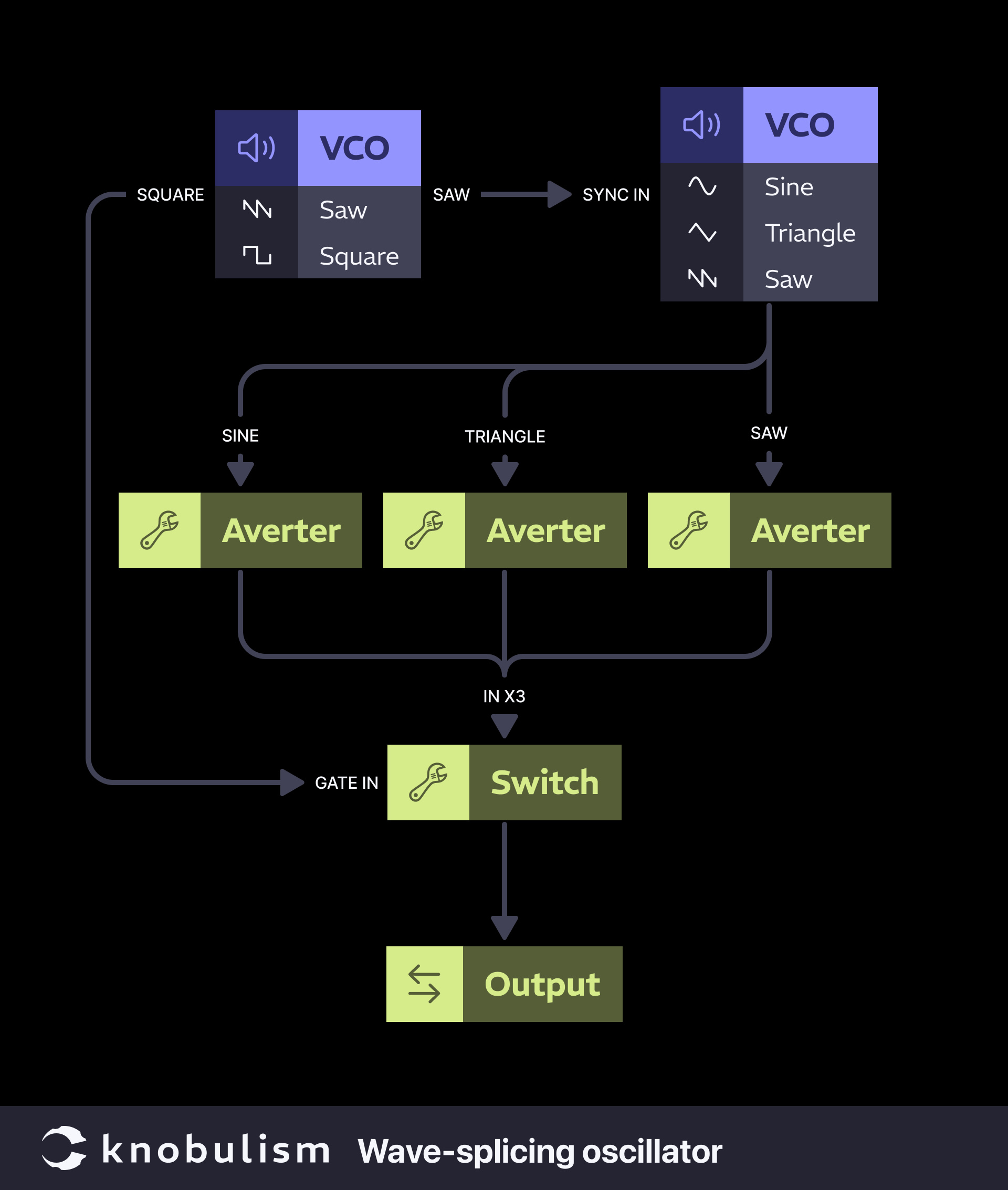
The Recombination Engine packs a shit load of flexibility for sound design into one of the most unique eurorack analog oscillator designs. As with all the previous patches, there is no way you are gonna patch this fully without breaking the bank and needing a bigger case. Though, if you have a couple of spare VCOs, a switch and a couple of attenuators, you have yourself one of the coolest ways to waveshape.
Remember, these patches are just starting points. The real joy of modular synthesis comes from experimentation. Don’t be afraid to make adjustments, try unexpected connections, or even make “mistakes” – they often lead to the most interesting discoveries.
Patch programming is as much an art as it is a science. As you practice and experiment, you’ll develop an intuition for how different modules interact and how to achieve the sounds you hear in your head. It’s a journey of continuous learning and discovery, which is what makes modular synthesis so rewarding.
So, grab your patch cables and start exploring. Your perfect sound is out there, waiting to be discovered through clever patching and creative thinking. Enjoy the process, and happy patching!

